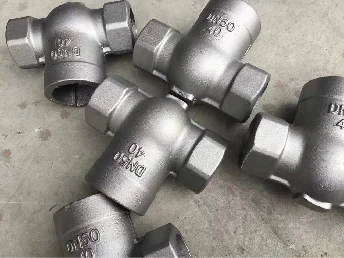The Uses of Foundry Sand An Insight into Its Versatility and Importance
Foundry sand is a byproduct of the metal casting industry, formed from silica and other materials. Initially employed to create molds for metal casting, its properties make it suitable for a wide range of applications beyond traditional foundry processes. Understanding the various uses of foundry sand not only highlights its significance in industrial practices but also emphasizes the importance of recycling and sustainability.
One of the primary uses of foundry sand is in the production of molds for casting metals such as aluminum, iron, and steel. This application exploits the sand’s fine texture and ability to withstand high temperatures. Foundry sand provides a smooth surface finish for casted products, ensuring high-quality outputs that meet precise engineering specifications. As the demand for lightweight and high-performance components continues to grow in industries like automotive and aerospace, the use of foundry sand becomes increasingly important.
In addition to its role in metal casting, foundry sand has found applications in the construction industry. It can be used as a unique aggregate in concrete production, providing strength and improving the workability of the mix. The incorporation of foundry sand in concrete can reduce the need for virgin aggregates, thus supporting sustainable building practices. Furthermore, it is often utilized in asphalt mixtures, where it can enhance skid resistance and durability, making roads safer and longer-lasting.
uses of foundry sand

Another innovative use of foundry sand is in land reclamation and soil stabilization. When mixed with native soil, foundry sand can improve drainage and shear strength, making it an excellent material for creating more stable environments in construction and landscaping projects. This application offers an eco-friendly solution by repurposing industrial waste instead of contributing to landfill growth, thus minimizing environmental impact.
Additionally, foundry sand can be employed in the production of glass and ceramics. Its high silica content and thermal stability make it a valuable component in glass manufacturing, where it contributes to the desired properties of the final product. In the ceramics industry, foundry sand can be used in the formulation of various products, providing texture and strength.
Finally, foundry sand has also been recognized for its potential use in agricultural applications. It can help improve soil properties, enhance drainage, and prevent erosion. As sustainable farming practices gain prominence, repurposing foundry sand in agriculture can contribute to healthier soils and better crop yields.
In conclusion, the uses of foundry sand extend far beyond its initial application in metal casting. Its versatility makes it beneficial in construction, land reclamation, ceramics, and even agriculture. Emphasizing the importance of recycling foundry sand not only contributes to sustainable industrial practices but also ensures that valuable resources are efficiently utilized. With ongoing research and innovation, the potential applications of foundry sand will likely continue to expand, benefiting various sectors and the overall environment.
Post time:Ira . 24, 2024 03:20
Next:Golden Shores Enterprises Innovative Solutions for a Brighter Future in Business
